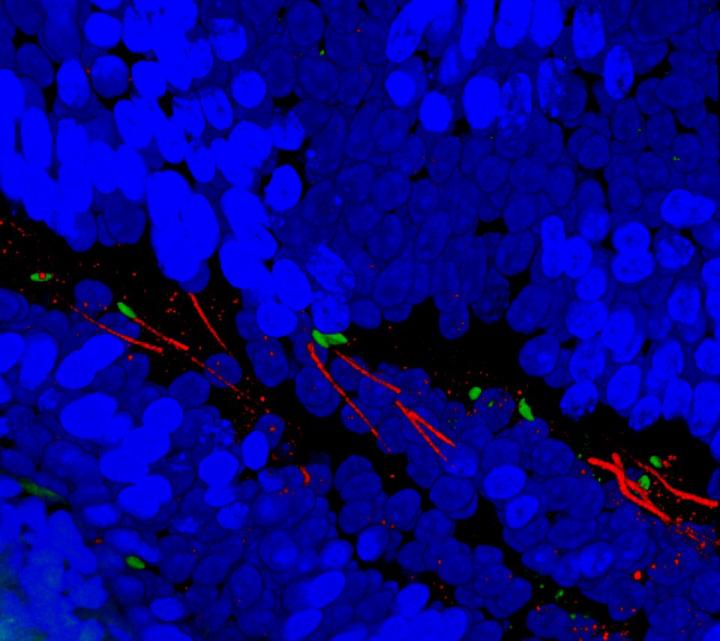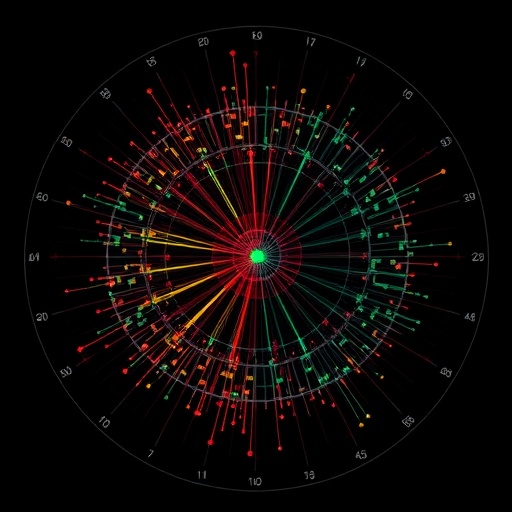A study in mice provides insights on the processes that determine which sperm will reach an egg to fertilise it, a discovery that may aid infertility research

Credit: Lukas Ded (CC BY 4.0)
A protein called CatSper1 may act as a molecular ‘barcode’ that helps determine which sperm cells will make it to an egg and which are eliminated along the way.
The findings in mice, published recently in eLife, have important implications for understanding the selection process that sperm cells undergo after they enter the female reproductive tract, a key step in reproduction. Learning more about these processes could lead to the development of new approaches to treating infertility.
“Male mammals ejaculate millions of sperm cells into the female’s reproductive tract, but only a few arrive at the egg,” explains senior author Jean-Ju Chung, Assistant Professor of Cellular & Molecular Physiology at Yale School of Medicine, New Haven, Connecticut, US. “This suggests that sperm cells are selected as they travel through the tract and excess cells are eliminated. But most of our knowledge about fertilisation in mammals has come from studying isolated sperm cells and eggs in a petri dish – an approach that doesn’t allow us to see what happens during the sperm selection and elimination processes.”
To address this challenge, Chung and colleagues, including lead author Lukas Ded, who was a postdoctoral fellow in the Chung laboratory when the study was carried out, devised a new molecular imaging strategy to observe the sperm selection process within the reproductive tract of mice. Using this technique, and combining it with more traditional molecular biology studies, the team revealed that a sperm protein called CatSper1 must be intact for a sperm cell to fertilise an egg.
The CatSper1 protein is one of four proteins that create a channel to allow calcium to flow into the membrane surrounding the tail of the sperm. This channel is essential for sperm movement and survival. If this protein is lopped off in the reproductive tract, the sperm never makes it to the egg and dies. “This highlights CatSper1 as a kind of barcode for sperm selection and elimination in the female reproductive tract,” says Chung.
The findings, and the new imaging platform created by the team, may enable scientists to learn more about the steps in the fertilisation process and what happens afterwards, such as when the egg implants into the mother’s uterus.
“Our study opens up new horizons to visualise and analyse molecular events in single sperm cells during fertilisation and the earliest stages of pregnancy,” Chung concludes. “This and further studies could ultimately provide new insights to aid the development of novel infertility treatments.”
###
Reference
The paper ‘3D in situ imaging of female reproductive tract reveals molecular signatures of fertilizing spermatozoa in mice’ can be freely accessed online at https:/
Media contact
Emily Packer, Media Relations Manager
eLife
[email protected]
01223 855373
About eLife
eLife is a non-profit organisation created by funders and led by researchers. Our mission is to accelerate discovery by operating a platform for research communication that encourages and recognises the most responsible behaviours. We work across three major areas: publishing, technology and research culture. We aim to publish work of the highest standards and importance in all areas of biology and medicine, including Cell Biology and Structural Biology and Molecular Biophysics, while exploring creative new ways to improve how research is assessed and published. We also invest in open-source technology innovation to modernise the infrastructure for science publishing and improve online tools for sharing, using and interacting with new results. eLife receives financial support and strategic guidance from the Howard Hughes Medical Institute, the Knut and Alice Wallenberg Foundation, the Max Planck Society and Wellcome. Learn more at https:/
To read the latest Cell Biology research published in eLife, visit https:/
And for the latest in Structural Biology and Molecular Biophysics, see https:/
Media Contact
Emily Packer
[email protected]
Original Source
https:/
Related Journal Article
http://dx.





